Triggerfish Species
Triggerfish belong to the family Balistidae, which encompasses various species that are primarily found within the warm waters of the world’s oceans. Known for their distinct appearance and assertive behaviors, these fish display a remarkable adaptation to their aquatic environments. Scientifically classified under the order Tetraodontiformes, triggerfish are characterized by their laterally compressed bodies, which often exhibit vibrant colors and intricate patterns that vary significantly from one species to another.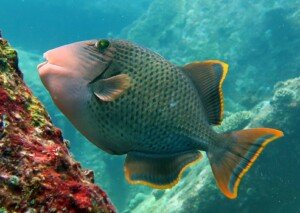
One of the most notable features of triggerfish is their unique shape, typically characterized by a robust body and a prominent forehead. Their colorful skin serves not only a decorative purpose but also helps them camouflage among the coral reefs and rocky substrates they inhabit. Common color patterns include bright blues, yellows, and greens, often adorned with spots or stripes, making them visually striking creatures. The diversity among triggerfish species is vast; notable examples include the Picasso triggerfish and the humuhumunukunukuapua’a, each showcasing unique traits that fascinate marine enthusiasts and researchers alike.
Triggerfish exhibit intriguing behaviors, particularly in their self-defense mechanisms. They have a special ability to lock their first dorsal spine in an upright position, effectively anchoring themselves in crevices against predators. This behavior, combined with their aggressive nature, allows them to defend their territory fiercely. Their feeding habits are also distinct; triggerfish primarily consume crustaceans, mollusks, and small invertebrates from the ocean floor, utilizing their strong jaws to crush hard-shelled prey.
Predominantly found in diverse habitats, these fish thrive around coral reefs, rocky shores, and lagoons, contributing to the ecological balance of their environments. Understanding these unique characteristics of triggerfish not only sheds light on their adaptations but also underscores the importance of preserving their habitats in the face of environmental challenges.
Feeding Habits: What Do Triggerfish Eat?
Triggerfish species are known for their diverse and adaptable feeding habits, classifying them as omnivores. This dietary flexibility allows them to thrive in various marine environments, where they primarily consume a wide array of prey including invertebrates, crustaceans, and algae. Their diet often comprises organisms such as mollusks, sea urchins, and small fish, making them crucial components of the marine food web.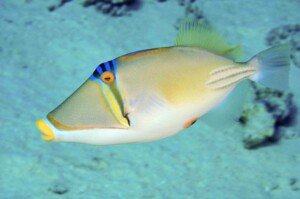
One of the unique aspects of triggerfish feeding is their foraging techniques, which are tailored to their evolved traits. Equipped with powerful jaws and strong teeth, triggerfish can easily crack open the hard shells of crustaceans and mollusks. They often employ a technique called “vacuum feeding,” wherein they create suction to draw prey into their mouths. This method not only enables them to capture prey effectively but also exhibits their adaptability to the availability of food sources in their environment.
Environmental conditions can significantly affect the feeding behavior of triggerfish. For example, during periods of scarcity in food availability, such as seasonal changes or habitat degradation, these fish may adjust their diet to include more algae and detritus to maintain their nutritional needs. Conversely, when food is abundant, they tend to exhibit more selective feeding, targeting high-energy prey. Their health and growth can be closely tied to the availability of optimal food sources, as adequate nutrition is essential for their reproductive success and overall well-being.
In conclusion, the feeding habits of triggerfish are a remarkable reflection of their role in marine ecosystems. Their adaptable diet not only aids their survival but also influences the composition of their habitats, demonstrating their importance in maintaining ecological balance.
Predators of Triggerfish: The Circle of Life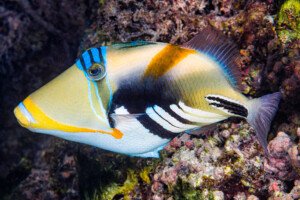
Triggerfish species are known for their vibrant colors and distinctive shapes, occupy an important ecological niche within marine ecosystems. However, they are not without their challenges, as a number of predators pose a significant threat to their populations. Among the primary natural predators of triggerfish are larger fish species, such as groupers and jacks, which utilize their speed and size to capture triggerfish as prey. Additionally, marine mammals, including dolphins and some shark species, also include triggerfish in their diets, illustrating the complex dynamics of marine food webs.
In response to these threats, triggerfish have developed several defense mechanisms. Their unique bodies, characterized by a hard, tough skin and a specialized spine that allows them to wedge themselves into crevices, offer significant protection against potential predators. When threatened, triggerfish can quickly pivot and hide in rocky alcoves or among coral reefs, where their bright colors provide camouflage in the underwater landscape. This behavior not only enhances their chances of survival but also plays a crucial role in maintaining the balance of marine biodiversity.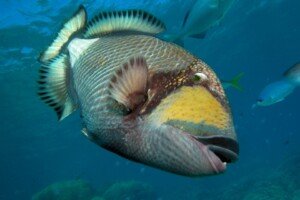
Human activities further complicate the predator-prey dynamics impacting triggerfish species populations. Overfishing, habitat destruction due to coral bleaching, and pollution significantly alter the ecological balance that supports triggerfish and their predators. As triggerfish habitats decline, they face increasing pressure from their natural predators, while simultaneously being at risk due to diminishing resources. Thus, understanding these interactions is vital for effective conservation efforts aimed at protecting triggerfish and ensuring the stability of their ecosystems. Addressing the challenges linked to human impact and preserving the habitats that triggerfish and their predators rely on is essential for maintaining the delicate equilibrium of marine life.
Lifespan of Triggerfish: An Insight into Their Longevity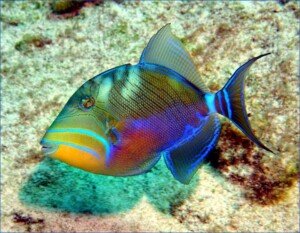
Triggerfish species are known for their vibrant colors and unique appearance, but their lifespan is equally remarkable. In the wild, triggerfish can live anywhere from 5 to 10 years, although certain species have been recorded living up to 15 years under optimal conditions. Factors influencing their longevity include genetics, diet, and environmental conditions. These elements contribute significantly to their overall health and lifespan. For instance, a balanced diet rich in marine plants and small invertebrates facilitates growth and helps maintain health, which is crucial for longevity.
In captivity, triggerfish species tend to have extended lifespans due to better management of their diet, care, and reduced exposure to threats. It has been observed that when kept in a well-maintained aquarium environment, some species manage to live beyond the typical lifespan seen in the wild. The absence of predators and the availability of controlled dietary options contribute to these extended life spans. However, even in captivity, factors such as water quality, tank size, and regular maintenance play essential roles in determining how long they can thrive.
There is a notable variance in longevity among different triggerfish species. For instance, the clown triggerfish may have a different lifespan compared to the queen triggerfish, influenced by metabolic rates and adaptability to their habitats. Moreover, their reproductive cycles also impact their survival; spawning periods often see increased vulnerability to predation. Additionally, when comparing the lifespan of triggerfish to other fish species, it becomes evident that their longevity is relatively favorable. While many common fish may only live for a few years, triggerfish stand out with their ability to thrive for a decade or more, highlighting their robust nature and adaptability in various environments.
